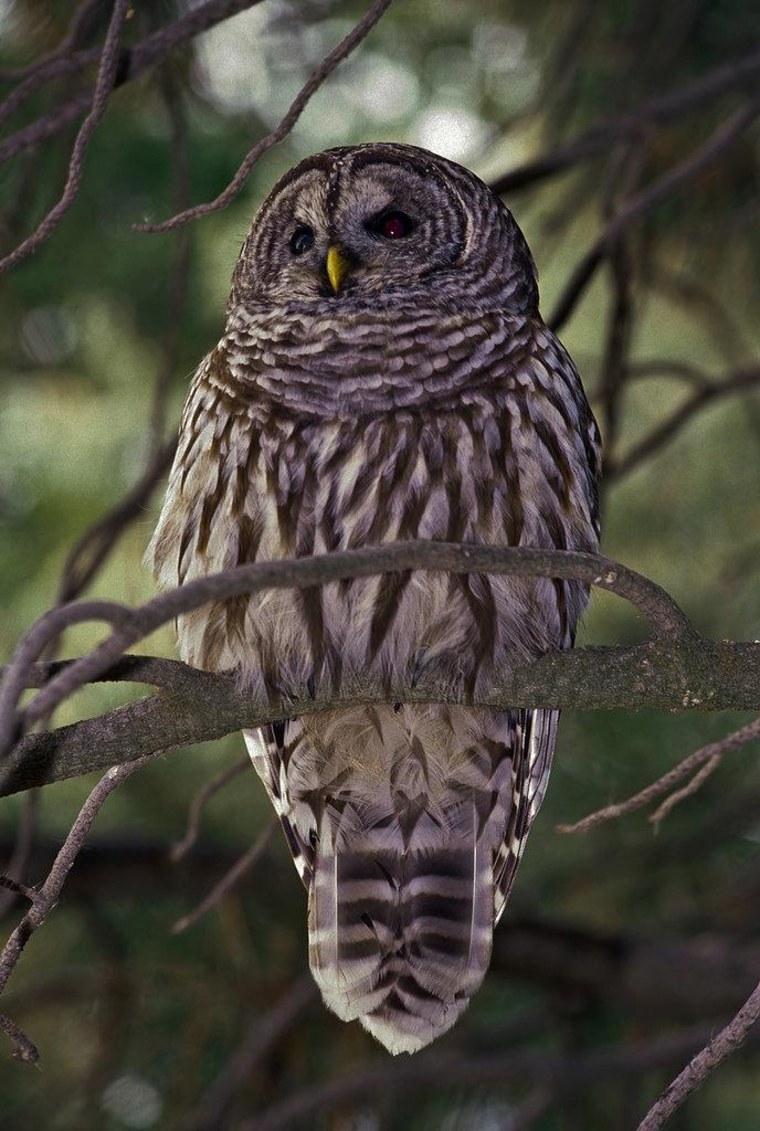Using the delicate euphemism "limited experimental removal," a federal agency said Tuesday it plans to start shooting one species of owl to save another.
The U.S. Fish & Wildlife Service published an environmental impact statement explaining why it had approved the removal of about 3,600 barred owls — some by "lethal" means — in four "test areas" of Oregon, Washington and California.
The reason: "Habitat loss and competition from recently arrived barred owls (are) the most pressing threats to the northern spotted owl."
Killing barred owls is only one of the methods the statement details for controlling the population of barred owls — another is to trap them and take them somewhere else — but it is sure to be the most controversial.
In its public statement, the closest the Fish & Wildlife Service comes to saying it plans to kill the birds is an oblique reference to "lethal and non-lethal methods of barred owl removal."
You have to read the 505-page environmental impact statement to learn that "the general approach involves attracting territorial barred owls with recorded calls and shooting birds that respond when they approach closely."
The specific approach:
"All lethal removal should be done by shotgun of 20 gauge or larger bore, using non-toxic lead substitute (e.g., Hevi-shot) shot. Lead shot should not be used. Rifles, pistols, or other firearms or methods are not authorized under this protocol. We recommend using a shotgun with a full choke."
The impact statement, which notes that "even a small-scale removal is objectionable to some," includes seven pages outlining the ethical considerations of the agency's decision. It says the Fish & Wildlife Service even hired an outside ethicist "to help us explore ethical questions and concerns about barred owl removal."
That process involved three meetings of more than 40 officials from the federal government, state and tribal governments, the timber industry and animal preservation and conservation groups.
"Out of a sense of the crisis and triage, the group participants shared a perspective concerning the need to conduct a removal experiment to answer critical questions," the impact statement says.
"While both lethal and nonlethal removal was discussed, lethal removal generated the most concern amongst interested parties, yet was also considered by many the most feasible approach."
The federal government floated plans to shoot barred owls as long ago as 2005, but those plans have been on hold ever since as environmentalists and scientific review boards have objected.
Acceptance of the environmental impact statement Tuesday is the last major hurdle to implementing the controversial plan, and final approval is expected in August.
The federal government first listed the northern spotted owl as threatened under the Endangered Species Act in 1990. Their population is dwindling by an average of 2.9 percent every year, it says.
Barred owls are native to eastern North America, but they've arrived in the West only relatively recently, first having been seen in western Washington in 1973. The Fish & Wildlife Service says there's a direct correlation between the growth of the barred owl and the disappearance of the northern spotted owl.
"We can't ignore the mounting evidence that competition from barred owls is a major factor in the northern spotted owl's decline, along with habitat loss," Dan Ashe, director of the Fish & Wildlife Service, said in the public statement.
The agency plans to conduct what it prefers to call "limited experimental removal" operations in four wildlife "study areas": around Cle Elum, Wash.; parts of the combined wildlife habitats in the Oregon Coast Ranges and the town of Veneta, Ore.; the Union/Myrtle area of southern Oregon; and the Hoopa/Willow Creek area of Northern California.
The test is projected to take as long as four years, and if it succeeds, "the service may consider using barred owl removal as part of a larger barred owl management strategy," the Fish & Wildlife Service said.
